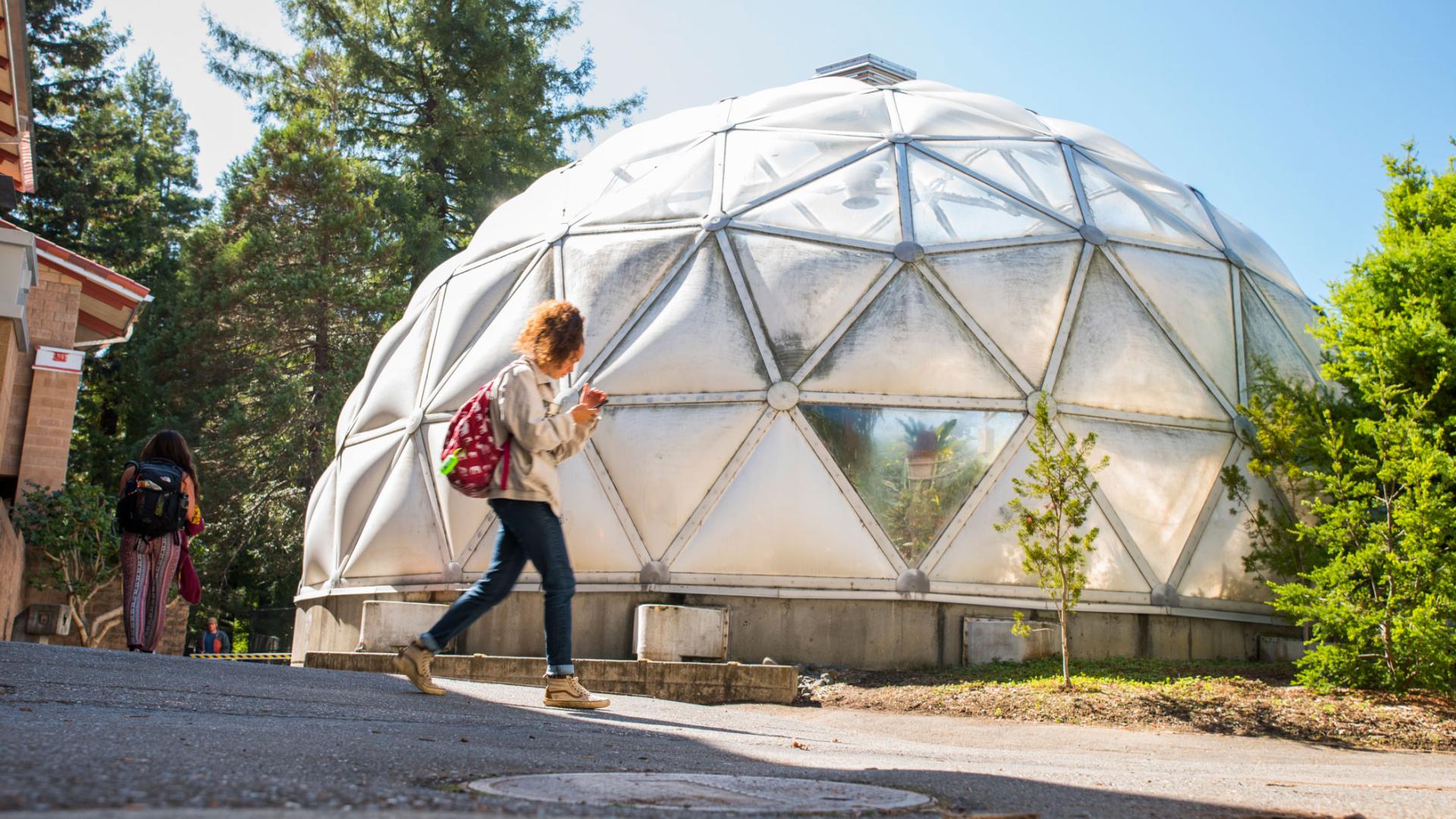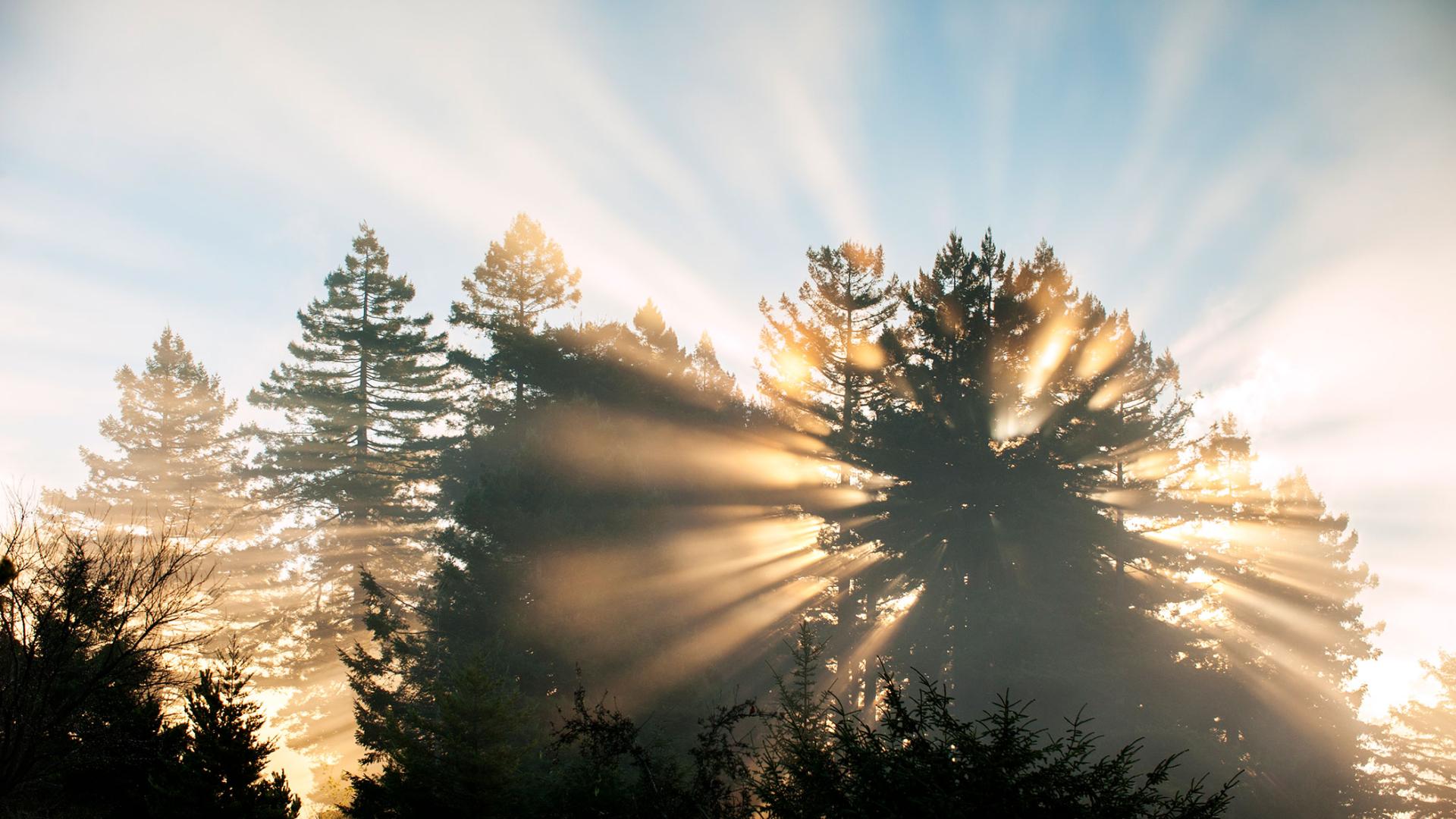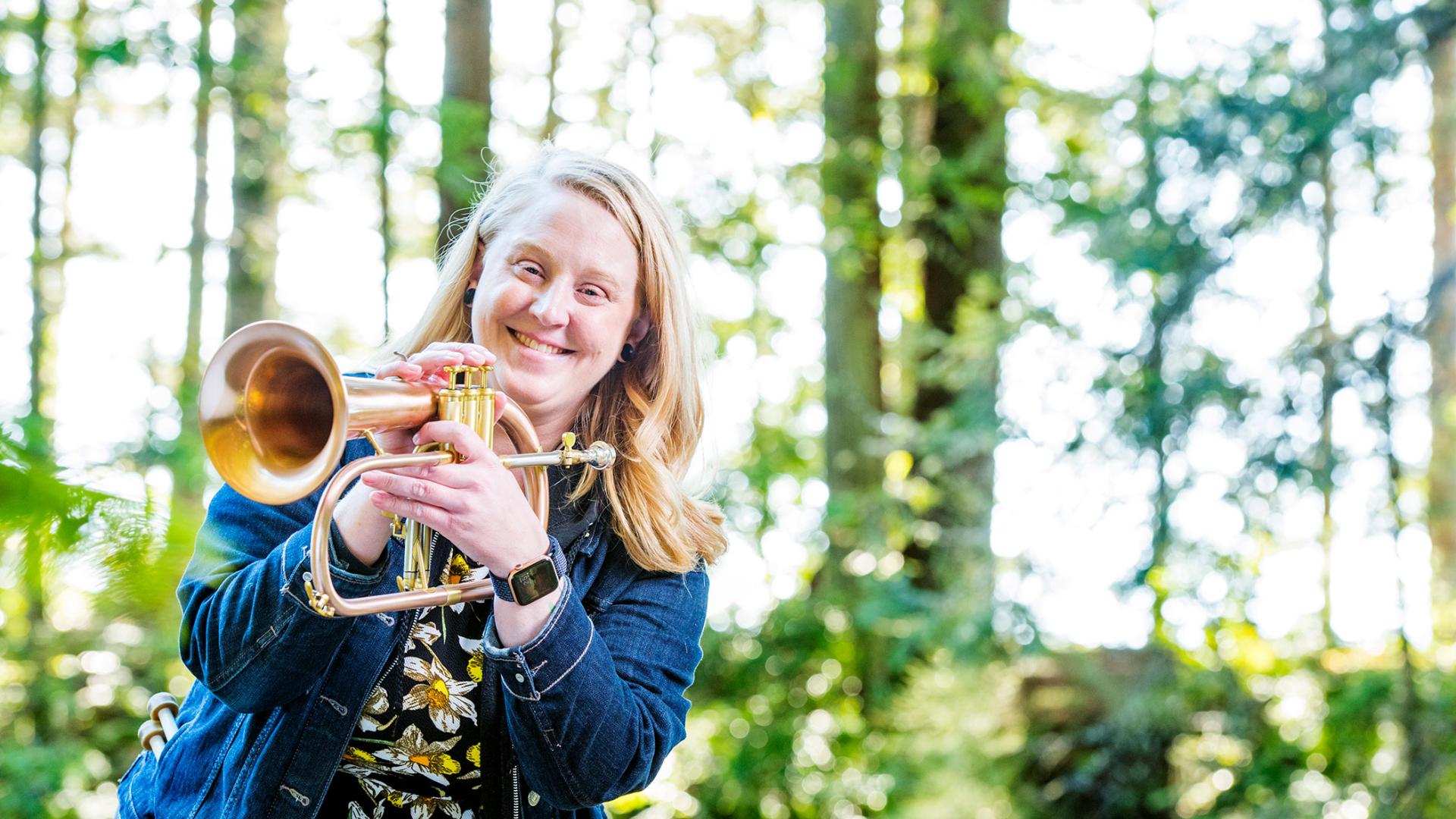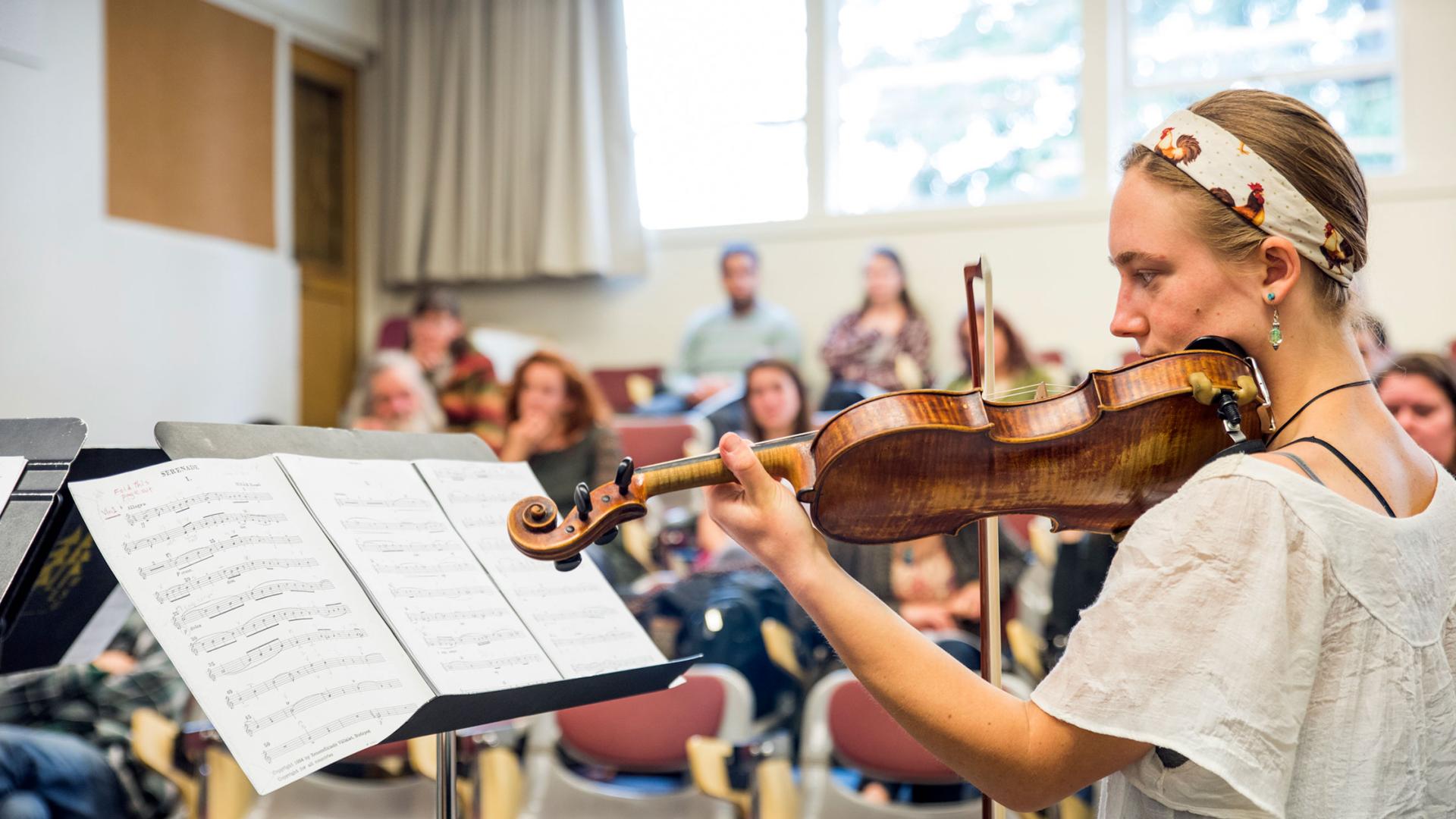Breadcrumb
Poland Bioarchaeology Field School
The Summer 2026 program is enrolling directly through the Slavia Foundation.
- Interested students should read more information on the Slavia Foundation website and apply through the Slavia Foundation by requesting an info packet via this form or by emailing fieldwork@slavia.org.
- Cal Poly Humboldt students should also contact Dr. Marissa Ramsier at marissa.ramsier@humboldt.edu.
- Students are encouraged to apply early - the application deadline is rolling until all spaces are filled.
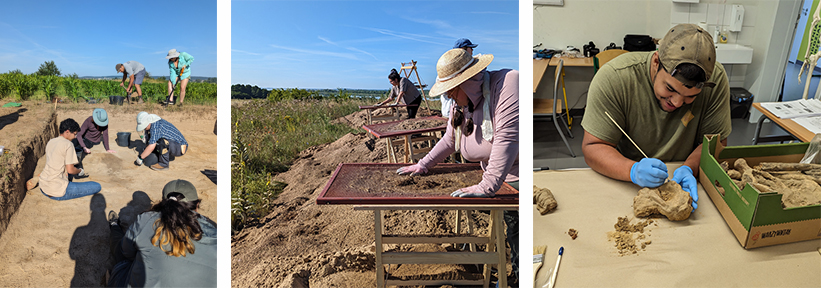
The Medieval Bioarchaeology Field Program in Żelewo, Poland is a summer field school run jointly by faculty from the University of Szczecin in Poland and other institutions in the US and Poland. The program is run in cooperation with the Slavia Foundation. It is a unique opportunity to excavate and analyze medieval remains as part of a salvage archaeological project due to intensive agriculture and natural processes in the region.
The field school takes place in the beautiful countryside village of Żelewo in northwestern Poland, about 60 miles south of the Baltic Sea. The cemetery site at Żelewo dates mostly to the 13th - 15th Century, but the site also contains at least one much older burial, and traces of occupation tens of thousands of years earlier. During the medieval period until recent decades, the site was part of the region known as Pomerania. During the medieval period, the site was part of the estate of the Kołbacz Monastery, which was associated with the Cistercian Order. Goals of the project include mitigating site damage and participating in rebuilding the history of the region that has been lost to time and the destruction of records during WWII.
This is an active research site, and students participate directly in the research. So far, more than 40 burials have been revealed, mostly but not all consistent with Christian burial practices. We are just beginning to understand the broad context of the cemetery and its relationship to numerous surrounding features yet to be fully excavated. This site is expected to reveal numerous additional burials and other features, providing an excellent opportunity for real hands-on experience analyzing remains.
This program is an intensive and rewarding experience. Students work side-by-side with archaeologists and osteologists to locate and excavate burials – they learn field methods such as leveling, revealing grave shape, and careful excavation. In the lab, students gain skills in human osteology and pathology by analyzing remains and producing biological profiles of the individuals. Students also experience Polish culture and history firsthand by interacting with the community and visiting historical sites such as castles and churches, while living in a country that has long been a crossroads of central Europe.
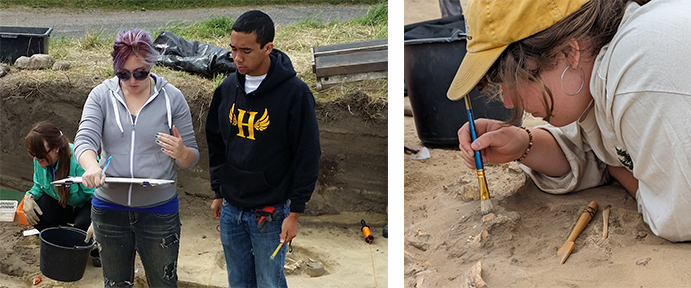
Courses/Units
- The Summer 2026 program is running through the Slavia Foundation. With approval from the Slavia Foundation, students may earn credit from Adam Mickiewicz University in Poznań. This is coordinated by the Slavia Foundation, not by Cal Poly Humboldt. Any questions about these units should be directed to fieldwork@slavia.org.
- Students should contact their academic advisors to discuss how this program may count towards fulfillment of their program requirements. Anthropology students should contact Marissa Ramsier at marissa.ramsier@humboldt.edu.
Dates for Summer 2026: To be announced
- Arrival: It is recommended that students arrive at/near Poland at least one or two full days ahead of the start dates. Many students enjoy arriving ahead and touring the region. The field school bus picks students up in Szczecin the morning of the first day of the session indicated above. Szczecin is the regional capital about 18 miles from the field site and about 2.5 hours from Berlin. To get to Szczecin, students take a bus/train from their arrival airport of choice. It is possible to fly directly to the Szczecin-Goleniów Airport (SZZ), although for more options and best bus/train service, we recommend arriving at the Brandenburg Airport (BER) airport and catching the FlixBus next to the airport. Students attending the program will be provided additional information in a shared Google Doc - if you are attending and do not have access to the document, please email marissa.ramsier@humboldt.edu
- After the program: Bus returns students to Szczecin in the morning the final day of the program. From this point, students may continue travel independently or take a bus/train to their departure airport. If leaving directly after the program, students are advised to plan their flight no sooner than the late afternoon. We recommend planning the departing flight at least a day after the program to give yourself time to sightsee.
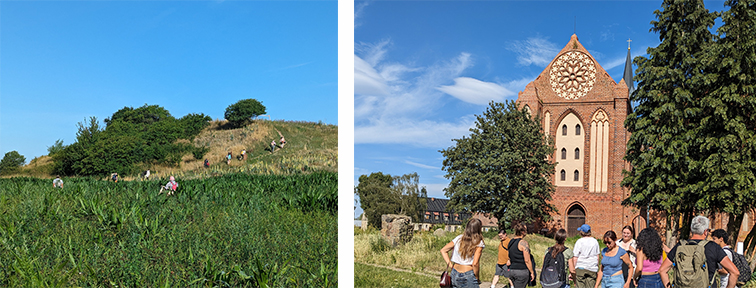
Location / Site
- The field school takes place in the beautiful countryside village of Żelewo (see map) in northwestern Poland. Żelewo is a small village on the shore of Lake Miedwie. There are many additional towns and villages around the lake, including Kobylanka, where we plan to lodge. The site is about 18 miles from the regional capital Szczecin.
- Students stay in classrooms (at a local school) that have been adapted as dormitories. There are restroom and shower facilities. Cell phone reception at the school is generally good. Internet/Wi-Fi is available but sometimes intermittent.
- Meals are served at in the morning, afternoon, and evening. We will eat healthy Polish fare, and vegetarian options are available for all meals. Water is drinkable from the tap. There are markets directly by the lodging site.
- During the program, students have weekends free to tour the region. We also visit sites in the nearby region (Szczecin, Stargard, Kołbacz) as part of a group trip.
Budget (preliminary)
- Fees: Costs will be determined by and through the Slavia Foundation. An estimate is $3,500. The program fee covers in-Poland costs between pick-up and drop-off at the arrival city (Szczecin, Poland). This includes travel from Szczecin to the site and back, lodging at the site, and meals during the program. Students are responsible for additional costs for any choice travel, outings, and snacks, etc... before/during/after the program.
- Travel to and from Poland: Cost varies. Students are responsible for their own travel to and from Szczecin, Poland (see schedule for more information). Cost varies depending on time of purchase and travel choices. Flights are generally least expensive if purchased in advance and if flying from a major airport (e.g., SFO). Flying from the East Coast is generally less expensive. Specific information will be provided to attendees. Students are advised to not purchase airfare until their acceptance to the program is verified; however, keep in mind that fares are lower with early purchase. Students are advised to purchase flight insurance; the program shall not reimburse students for airfare if for any reason the student does not attend the program or if incorrect flights are purchased prior to confirming arrival information with faculty.
- Funding: Financial aid for summer is a bit different than it is for fall and spring. Humboldt students typically need to be enrolled in at least 6 summer units through Humboldt in order to get financial aid. Since the Slaiva units are not directly through Humboldt, this may mean registering for other courses/units if you need summer financial aid. Humboldt students can discuss options with Dr. Ramsier and the Office of Financial Aid. Summer financial aid usually dispersed until mid summer, well after program fees are due and plane tickets need to be purchased (early-mid spring). For all of these reasons, students are advised to consider planning their spring budget/aid to cover costs.
- Contact the Financial Aid office to discuss options.
- Contact the Study Abroad office for recommendations.
- Additional limited sources include:
- https://www.archaeological.org/grant/waldbaum-scholarship/
- Anthropology Department Travel Funds
- Anthropology Student Assistantship (see Poland Field School Prep)
Contact Information
- The Summer 2026 program is running through the Slavia Foundation. Interested students should read more information on the Slavia Foundation website and apply by requesting an info packet via this form or by emailing fieldwork@slavia.org.
- Cal Poly Humboldt students should also contact Dr. Marissa Ramsier at marissa.ramsier@humboldt.edu.

Below are some related publications from the bioarchaeology field school instructional faculty and previous Cal Poly Humboldt Anthropology Students, at Żelewo and the late medieval site at Bezławki in Northeastern Poland.
- Ramsier, M., Gaddis, K., Gruenthal-Rankin, A., Szyndller, M., Adamczyk, M., Karmowski, J., and Ślusarska, K. (2025). Novel patterns of localized dental pathology at the medieval cemetery of Żelewo, Poland: Implications for habitual activities and lived experience. Proceedings of 90th Annual Meeting of the Society for American Archaeology.
- Szyndller, M., Ramsier, M., Gaddis, K., Gruenthal-Rankin, A., Adamczyk, M., Karmowski, J., and Ślusarska, K. (2025). Resilience after trauma in medieval Poland: A case study examining agency vs. care in the bioarchaeological record. Proceedings of 90th Annual Meeting of the Society for American Archaeology.
- Ślusarska, K., Adamczyk, M., Karmowski, J., Gruenthal-Rankin, A., Gaddis, K., and Ramsier, M. (2024). Life and death by the lake in Pomerania: Introducing the late medieval cemetery at Żelewo site 1-3. Proceedings of 89th Annual Meeting of the Society for American Archaeology.
- Gruenthal-Rankin, A., Ramsier, M., Gaddis, K., and Koperkiewicz, A. (2022). Early-life dietary stress and frailty after colonization and conversion in medieval Prussia [Paper presentation abstract]. Proceedings of the 91st Annual Meeting of the American Association of Biological Anthropologists. American Journal of Biological Anthropology, 177(S73). https://doi.org/10.1002/ajpa.24514
- Ramsier, M., Gruenthal-Rankin, A., Gaddis, K., and Koperkeiwicz, A. (2022). Dietary trends in the post-colonization medieval Prussian region [Poster presentation abstract]. Proceedings of the 91st Annual Meeting of the American Association of Biological Anthropologists. American Journal of Biological Anthropology, 177(S73). https://doi.org/10.1002/ajpa.24514
- Gruenthal-Rankin, A. (2021). Dietary dimensions of early-life stress in medieval Prussia. [Unpublished doctoral dissertation, Binghamton University, SUNY].
- Ramsier, M., Gruenthal-Rankin, A., Gaddis, K., and Koperkiewicz, A. (2021). Sample size and representational bias in bioarchaeology: A case study of stature estimation from medieval Prussia. International Journal of Osteoarchaeology, 31(4), 523-533. https://doi.org/10.1002/oa.2969
- Gaddis, K., Ramsier, M., Koperkiewicz, A., Polcyn, M., and Gruenthal-Rankin, A. (2019). Weighing the possibilities: Exploring a modified technique for the assessment of frailty in human skeletal remains. [Poster presentation abstract]. Proceedings of the 88th Annual Meeting of the American Association of Physical Anthropologists. American Journal of Physical Anthropology, 168(S68). https://doi.org/10.1002/ajpa.23802
- Gruenthal-Rankin, A., Gaddis, K., Koperkiewicz, A., Polcyn, M., and Ramsier, M. (2019). Testing the effectiveness of permanent canine tooth metrics for sex estimation in a medieval Prussian sample [Poster presentation abstract]. Proceedings of the 88th Annual Meeting of the American Association of Physical Anthropologists. American Journal of Physical Anthropology, 168(S68). https://doi.org/10.1002/ajpa.23802
- Pritchard, C. (2019). Assessing craniofacial variation and sexual dimorphism in a skeletal sample from Medieval Prussia (Publication No. 273) [Master's thesis, Cal Poly Humboldt]. Humboldt Theses and Projects.
- Pritchard, C., Gruenthal-Rankin, A., Koperkiewicz, A., Polcyn, M., and Ramsier, M. (2019). Assessing craniofacial variation and sexual dimorphism in a skeletal sample from medieval Prussia. [Poster presentation abstract]. Proceedings of the 88th Annual Meeting of the American Association of Physical Anthropologists. American Journal of Physical Anthropology, 168(S68). https://doi.org/10.1002/ajpa.23802
- Gaddis, K. (2018). Stress and frailty in medieval Prussia: interpretations from skeletal remains at Bezławki (Publication No. 120) [Master's thesis, Cal Poly Humboldt]. Humboldt Theses and Projects.
- Gaddis, K., Gruenthal-Rankin, A., Ramsier, M., Koperkiewicz, A., and Polcyn, M. (2018). Stress and frailty in medieval Prussia: Interpretations from skeletal remains at Bezławki. [Poster presentation abstract]. Proceedings of the 87th Annual Meeting of the American Association of Physical Anthropologists. American Journal of Physical Anthropology, 165(S66), 92. https://doi.org/10.1002/ajpa.23489
- Horvat, J., Ramsier, M., Gruenthal-Rankin, A., Koperkiewicz, A., and Polcyn, M. (2018). Nutrition and diet of a late medieval Prussian population: What the analysis of dental microwear can tell us. [Poster presentation abstract]. Proceedings of the 87th Annual Meeting of the American Association of Physical Anthropologists. American Journal of Physical Anthropology, 165(S66), 125. https://doi.org/10.1002/ajpa.23489
- Ramsier, M., Gruenthal-Rankin, A., Koperkiewicz, A., and Polcyn, M. (2018). Estimating stature and sex from incomplete postcranial remains in a late medieval Prussian population at Bezławki, Poland. [Poster presentation abstract]. Proceedings of the 87th Annual Meeting of the American Association of Physical Anthropologists. American Journal of Physical Anthropology, 165(S66), 220. https://doi.org/10.1002/ajpa.23489
- Gruenthal-Rankin, A., Ramsier, M., Koperkiewicz, A., and Polcyn, M. (2017). Preliminary findings on relationships among neural canal dimensions, terminal adult stature, and risk of death in a medieval Polish sample at Bezławki. [Poster presentation abstract]. Proceedings of the 86th Annual Meeting of the American Association of Physical Anthropologists. American Journal of Physical Anthropology, 162(S64), 203. https://doi.org/10.1002/ajpa.23210
- Ramsier, M., Gruenthal-Rankin, A., Koperkiewicz, A., and Polcyn, M. (2016). Preliminary osteological analyses and stature estimates of adults in an early medieval Prussian population at Bezławki, Poland. [Poster presentation abstract]. Proceedings of the 85th Annual Meeting of the American Association of Physical Anthropologists. American Journal of Physical Anthropology, 159(S62), 263. https://doi.org/10.1002/ajpa.22955
- Gruenthal-Rankin, A., Ramsier, M., Koperkiewicz, A., and Polcyn, M. (2015). Preliminary osteological analyses of the early medieval Prussian population at Bezławki, Poland. [Poster presentation abstract]. Proceedings of the 84th Annual Meeting of the American Association of Physical Anthropologists. American Journal of Physical Anthropology, 156(S60), 153. https://doi.org/10.1002/ajpa.22718
We are thrilled to have so many talented students accompany us into the field in Poland. We will be compiling narratives of some of our former students and staff here so that they can share their experiences.
Alyssa (2014 & 2015 Seasons - Bezławki site)
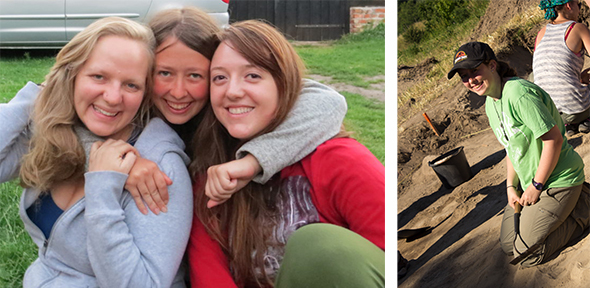
If I were to pick one word to describe my experience in Poland, it would be unforgettable. The first year I participated in the Bezławki field school was during my fourth year of college. My proposed field of study was mortuary archaeology, and I thought it would be useful to participate and obtain field experience at an archaeological site geographically different from my own regional area of study. I found this approach essential, especially since I wanted to further my education at a graduate level and experience new places. And plus, I am always up for new adventures! Poland is everything you would expect it to be; there’s friendly people, delicious fare, beautiful scenery, and castles. Yes, castles! And if that doesn’t get you excited, then I don’t know what will!
The Bezławki archaeological site is quite fascinating, and like all archaeology, you never know what to expect! The site is located in the beautiful countryside of northeastern Poland, and this area provides an excellent opportunity to interact with its history, in addition to the Polish people and culture. In front of the site, you will be marveled by the grassy hill with a castle-now-converted-church overlooking the landscape. The two summers that I had participated in the Bezławki field school, we received many visitors at the site, including several from outside of Poland. It was interesting to see people interested in our work and the remains we were uncovering.
In the field, every student participant became involved in all aspects of the archaeological process, which includes cleaning, taking photographs, mapping, and excavating a burial. Archaeology is difficult work; however, this field school provided an opportunity for us to strengthen our excavation skills, and also determine if we find enjoyment in this type of work.
In addition to the field work, we had the ability to examine the skeletal remains we recovered. Some students preferred laboratory work over the field, and this field school was exceptional for being flexible with students’ needs and interests.
On the off-days there were opportunities to travel to different historical sites, such as Wolf’s Lair (Hitler’s Bunker) and several Medieval castles and churches. We had the ability go swimming in lakes and purchase ice cream in several of the local towns (ice cream is a Polish favorite!). We also received traditional Polish fare every day at our housing, and there were several occasions where we visited restaurants. The pierogis are always a field school favorite and amazing (as you would expect). And if you love bread, you will love Poland.
I consider the best part about my Polish experience are the people that I have met. This field school provided a chance to connect and become friends with students with various diverse backgrounds. Archaeology field schools are designed to allow students to receive experience, strengthen their skills, and make connections with other field participants and staff. You also want to have fun and enjoy your experience in a new country, and if you are having fun, you are definitely in the right field.


